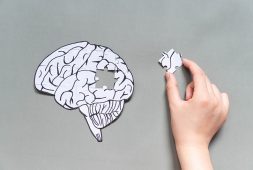
Recent research suggests that creating a personalized playlist can serve as a viable method for alleviating pain, with songs characterized as emotionally stirring and bittersweet demonstrating the most significant pain reduction benefits.
For individuals seeking a straightforward approach to mitigate pain without resorting to medication, a groundbreaking study published on October 25 in Frontiers in Pain Research proposes that listening to one’s favorite songs may offer a simple yet effective means of relief.
Pain is a multifaceted and individualized phenomenon, encompassing sensory, cognitive, and psychosocial elements, as highlighted by the American Music Therapy Association. Music therapy emerges as a versatile intervention capable of addressing pain through various mechanisms, including diverting attention from pain, decreasing pain intensity, alleviating stress and anxiety, and fostering a sense of control.
Music Could Disrupt Stimuli Before Pain Sets In
Coauthor Mathieu Roy, PhD, an associate professor of psychology at McGill University in Montreal, asserts that numerous studies have shown the significant efficacy of music in alleviating pain. The phenomenon of reduced sensitivity to pain, known as hypoalgesia, is observed when the perception of pain is interrupted between its origin (the stimuli) and its recognition as pain by the conscious mind.
“The effects generally range between a 10 to 20 percent reduction, so similar to anti-inflammatory drugs, for instance. The mechanism of how it works is different, but the amplitude of the effects appears to be comparable,” Dr. Roy said.
In 2021, a Cochrane review explored the impact of music interventions on individuals with cancer, revealing potential effectiveness in alleviating anxiety, depression, and pain. However, the authors noted a predominant high-risk bias and low certainty of evidence in the majority of the 81 studies examined.
But there hasn’t been much research done when it comes to knowing which type of music is best to help ease pain, Roy said. “Can we increase the effects of music? This is what we sought to test in our study.”
Participants Had Opted for Music They Saud They Would ‘Bring to a Desert Island’
A group of 63 healthy individuals, comprising 49 females and 14 males with an average age of 21, were enlisted for the study. Within a controlled laboratory setting, participants underwent moderately painful thermal stimuli applied to the inner forearm, mimicking the sensation of a hot tea cup against the skin. Various genres of music were paired with these simulated “burns,” each music segment lasting around seven minutes.
“We compared two different types of music: relaxing music that was taken from a music therapy application that’s been proved to be effective in prior studies, and self-selected preferred music,” said Roy.
For the self-selected music, participants were requested to bring two tracks that represented “their favorite music of all time,” and “the songs that they would bring with them to a desert island.” The control conditions were either silence (which means the total absence of music) or scrambled versions of the music.
The music that was chosen by study participants had a much larger effect on immediate thermal pain reduction than what was unfamiliar relaxing music to them. “We had 20 to 25 percent pain reduction for the self-selected preferred music — so that’s a relatively large effect compared to around 10 percent for the relaxing music app that the participants did not choose,” said Roy.
Enjoying preferred songs proved more effective in alleviating pain and discomfort than listening to scrambled music, which replicates musical elements but lacks meaningful structure. This suggests that the outcomes likely stem from more than just distraction or the presence of a sound stimulus.
“This is an interesting, ambitious study with a strong design,” said Joanne Loewy. She is a doctor of arts and the founding director of the Louis Armstrong Center for Music and Medicine at the Mount Sinai Health System in New York. “This study provides interesting validation for treating pain with music that is of significant importance to a patient,” said Dr. Loewy. She was not part of the research team.
She pointed out that it could have been intriguing to incorporate additional details about the songs, such as the proportion of the music dedicated to “song” elements (lyrics and melody) versus instrumental components, and also the era in which the song was produced.
Bittersweet, Emotional Tunes Were Seen to be Most Effective for Pain Reduction
In the latter phase of the experiment, participants were instructed to articulate and categorize the musical selections they had chosen for the study. According to Roy, the chosen songs could be broadly classified into four distinct categories: those with an energizing or activating quality, those conveying happiness or cheerfulness, those inducing a calming or relaxing effect, and those evoking a sense of movement or bittersweet emotion.
Interestingly, the songs that elicited stronger emotional responses, particularly those categorized as moving or bittersweet, demonstrated a noteworthy correlation with lower ratings of pain or discomfort. Roy also noted an increase in instances of musical chills associated with these emotionally charged selections.
Musical chills, characterized by sensations such as tingling, shivers, or goosebumps, represent a psychophysiological response. This phenomenon occurs when a cognitive event in the brain triggers a physical reaction in the body. The American Psychological Association acknowledges that while the complete nature of musical chills remains incompletely understood, they appear to signify a neurophysiological process that effectively inhibits pain signals. The authors of the study propose that the experience of musical chills may play a role in mitigating the perception of pain, thereby suggesting a potential therapeutic avenue for pain management.
The finding that the moving, bittersweet songs were linked to lower ratings of pain means that there may have been some intrinsic conflict-resolution within the music itself that proved useful, Loewy shared.
Can Listening to Music on Your Own Help?
Roy believes that listening to your favorite music — especially songs that are emotionally meaningful — may be helpful with most types of pain (provided that this wasn’t brought about by a life-threatening injury or condition). “Maybe not headaches, because many times people with headaches like quiet, but it can help with most types of pain.”
“Bittersweet” music may not be the same for all people, said Roy. “It’s music that is maybe a little bit sad, but not super sad. For me, it’s the songs of Leonard Cohen.”
If you want to explore the therapeutic effects of music for pain relief, Loewy recommends consulting a music therapist rather than attempting it independently. A music therapist can conduct a thorough assessment of your history and provide a music therapy evaluation to determine the most suitable and effective way for you to incorporate music into your healing process, according to her suggestion. “It might actually be counterproductive to simply assume a favorite tune will assist someone’s pain,” she adds.



